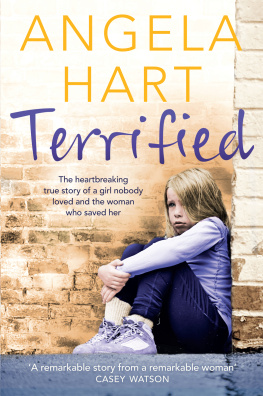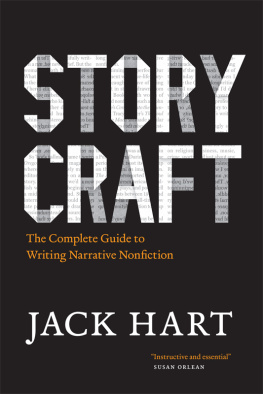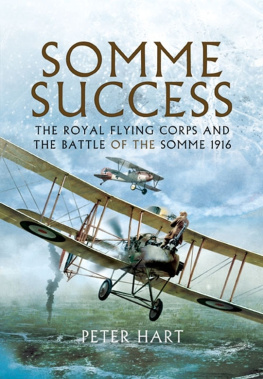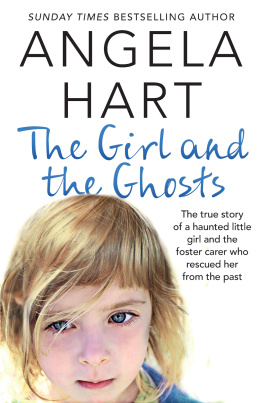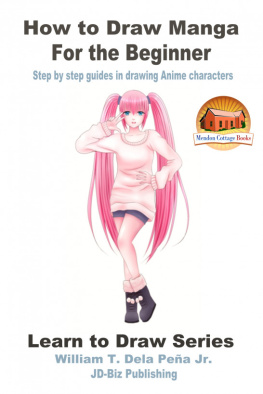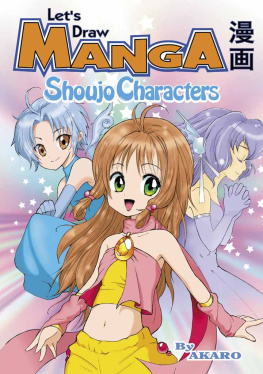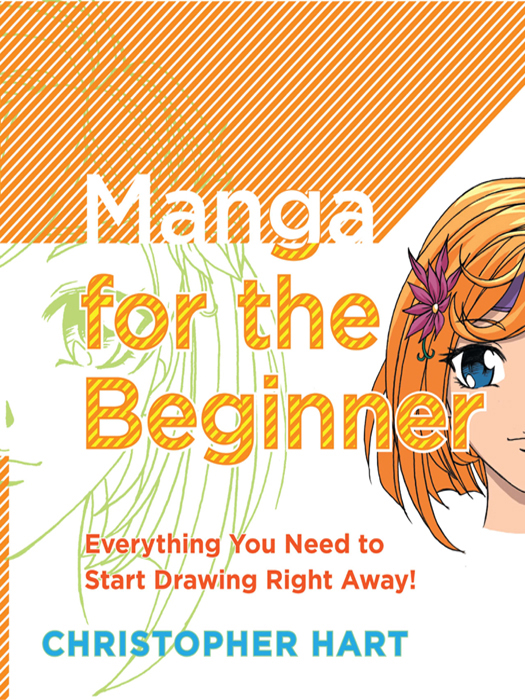
Executive Editor: Candace Raney
Senior Development Editors: Michelle Bredeson, Alisa Palazzo
Art Director: Timothy Hsu
Designers: T Hsu & Associates, Bob Fillie
Production Manager: Salvatore Destro
Contributing Artists
| Denise Akemi | Roberta Pares |
| Diana Fernandez | Diogo Saito |
| Cristina Francisco | Aurora Tejado |
| Elisa Kwon | Nao Yazawa |
Color by Richard and Tanya Horie (except in )
First published in 2008 by Watson-Guptil Publications, an imprint of the Crown Publishing Group, a division of Random House, Inc., New York
www.crownpublishing.com
www.watsonguptill.com
Copyright 2008 Christopher Hart
All rights reserved. No part of this publication may be reproduced or used in any form or by any meansgraphic, electronic, or mechanical, including photocopying, recording, taping, or information-storage-and-retrieval systemswithout written permission from the publisher.
Library of Congress Cataloging-in-Publication Data
Hart, Christopher.
Manga for the Beginner : everything you need to start drawing right away! / Christopher Hart.
p. cm.
Includes index.
eBook ISBN: 978-0-8230-0827-8
Trade Paperback ISBN: 978-0-8230-1488-0
1. Comic books, strips, etc.JapanTechnique. 2. CartooningTechnique. I. Title.
NC1764.5.J3H369286 2008
741.51dc22
2007040490
v3.1
This book is dedicated to all of my readers, but especially to those who have practiced so much that they have learned to live with pencil smudge marks on their hands!
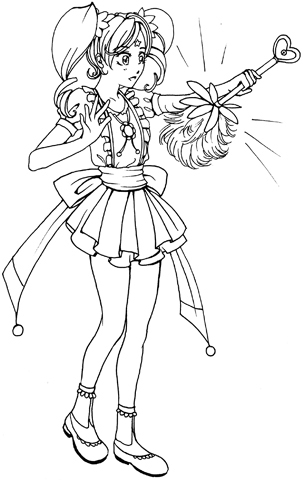
Contents
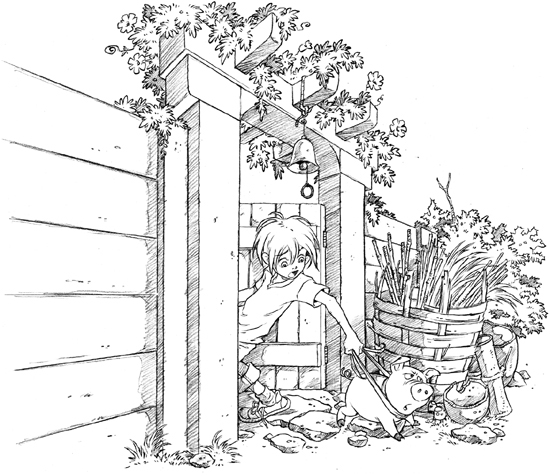
Introduction
WHEN I FIRST CAME UP WITH THE IDEAfor this book, I saw nothing like it on the bookstore shelves. Although I did see piles of how-to-draw-manga books aimed at newbies, they showed mostly Americanized manga. I wanted to do something truly authentic, with tons of step-by-step instructions that can really get you where you want to go. And I wanted to cover the entire world of manga characters, from all genres and categories, not just the bland fare typically dished out to beginners.
The result is the first complete book on drawing manga for beginners. Sure, well start out covering all the basics: the manga head and body, the brilliant eyes, the body proportions, and more. But the instruction doesnt end there. It moves on to costume and character design, action poses, special effects, perspective, and staging stories in sequential panelseverything you need to draw manga and, should you care to take it this far, even create your own manga graphic novel.
The most popular styles of manga are featured throughout this book in easy-to-follow lessons that are fun to draw. Theres shoujo, the famous big-eyed style that stars charming schoolgirls and schoolboys, and a huge section on shounen, or adventure-style, manga, which is packed with heroes, bad boys, martial arts fighters, and fearsome monsters. Weve also got chibis (the cute and tiny people of manga), adorable manga animals, anthros (animals that are drawn to mimic people), and a vampire or two for you manga occult fans. So, whether youre a complete beginner or already have some drawing experience, I guarantee that Manga for the Beginner has something in it for you.
The Manga Head
ONE REASON WHY MANGA CHARACTERSare so appealing is because the shape of the head is kept simple and easy to take in at a glance. Also, there arent any pronounced cheekbones, pouchy lines under the eyes, or heavy lines around the mouth to draw. Hows that for good news? There is, however, a heavy focus on the eyes; but not to fearthats the fun part, and youll get lots of examples of how to approach drawing them.

TEEN GIRL
Many manga heroes and other characters are young, so well start with the ever-popular teen girl. The typical manga teenage girl has a rounded head that tapers to a pointed chin. Her eyes, like those of most manga characters, are huge and placed low on the face for a youthful appearance (see for more on drawing sparkling manga eyes).
Front View
Everyone starts with the front view, because its the easiest pose to draw. But halfway into it, the beginner may become a bit frustrated. Well, let me let you in on a little secret: The front view is actually one of the hardest poses to draw! Its unexpectedly difficult. No wonder beginners find it challenging, and heres why: In the front view, you have to draw the entire outline of the head symmetrically, lining up the eyes and ears perfectly, foreshortening the nose, and designing a hairstyle that covers the entire head. Quite an assignment. Its tough to get all this on the first try. But if you break down the process into simple steps, it becomes much easier. And if you add intersecting horizontal and vertical guidelines, youll be confident of where to place the features.
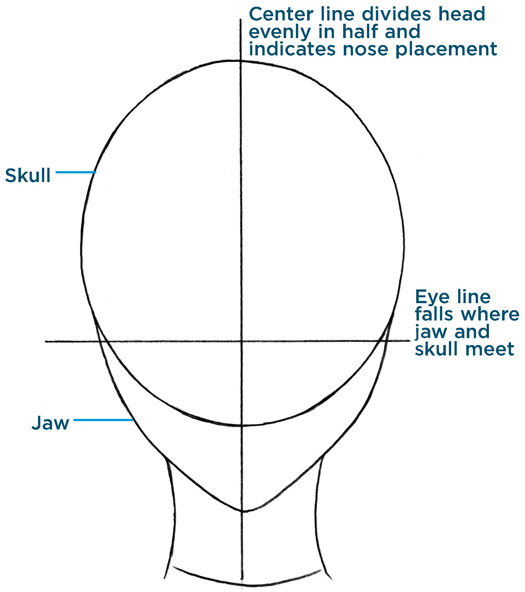
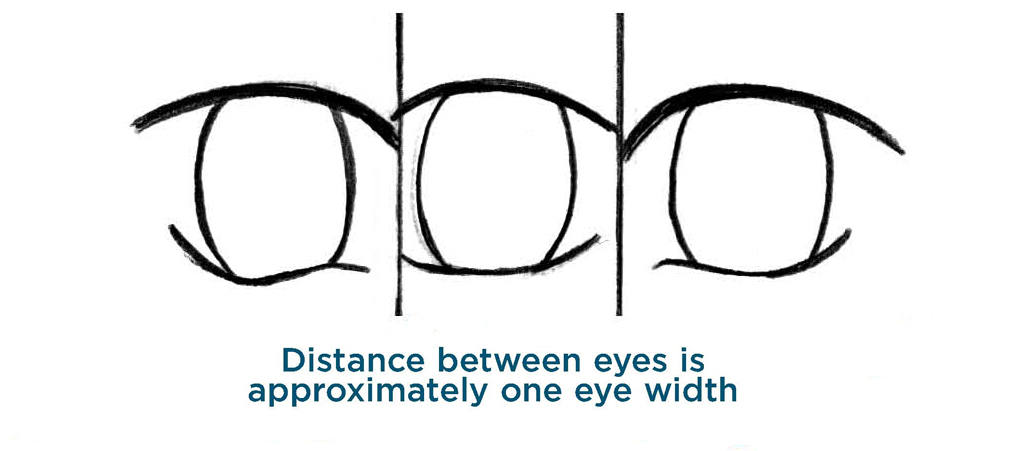

Quick Tip
The mouth falls about halfway between the eye line and the bottom of the chin. Use this to do a quick spot check on any drawing to ensure the positioning is correct, and if it isnt, simply erase and adjust it.

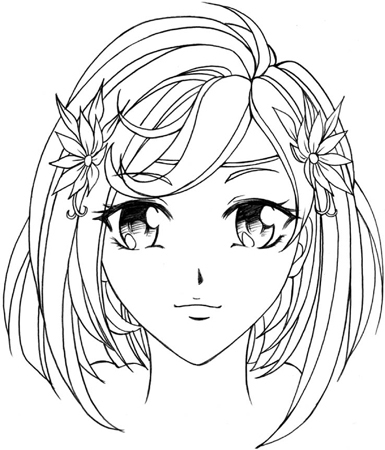
Heres the fun part: All your hard workthe foundationis in place, and you can start to fill in the eyes, the strands of hair, flowers, and any other details youd like to use to flesh out your character.
Profile
The profile, or side view, is easy to drawexcept for one part (isnt there always a caveat?). The sticking point is the mouth/chin area underneath the nose. If an artist is going to get a bit off track, thats often where it happens. Remember that, on female characters, the lips always protrude past the chin.


